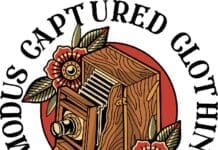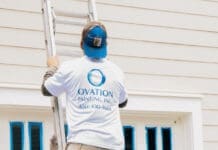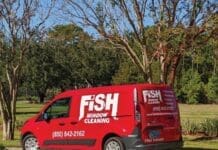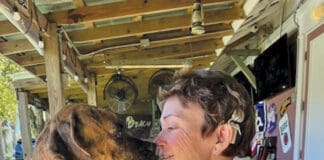The Florida Fish and Wildlife Conservation Commission (FWC) recently recognized Michael Jenkins of Walton County for his exemplary wildlife habitat management on his private property in Walton County.
Jenkins has implemented a variety of conservation practices to benefit gopher tortoises, white-tailed deer and other native wildlife species. His efforts include reforesting with longleaf pine, prescribed burns and planting native plants to support pollinators, all aimed at enhancing the food, shelter, and water resources on his property.
To show appreciation for the work done by landowners to conserve our state’s wildlife habitat, the FWC’s Landowner Assistance Program created the Wildlife Habitat Recognition Program to formally honor landowners by awarding them with a sign to display on their property and a certificate recognizing their habitat conservation efforts.
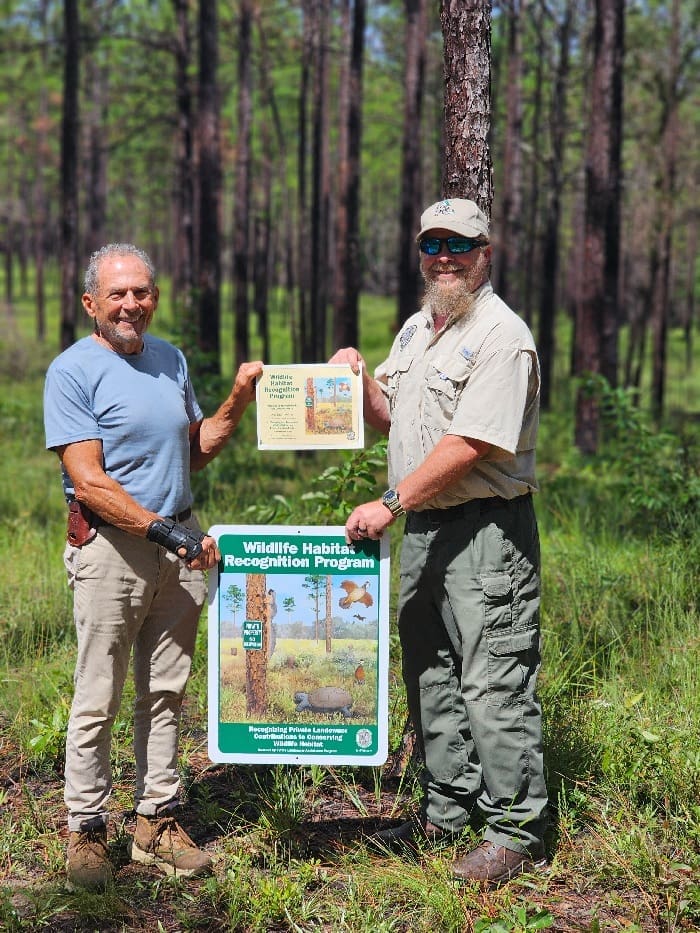
The Jenkins family purchased the land in 1998 out of a desire to own property away from the hustle of real estate and construction. In 2001, Jenkins converted his first 30-acre peanut field to loblolly pine. Since then, he has again converted that field and refashioned it into longleaf pine.
In 2005, and again in 2008, Jenkins planted longleaf pines on additional fields across his property. His vision for an exceptional wildlife habitat has increased exponentially. Jenkins’s collaboration with the FWC, Florida Forest Service and the University of Florida has developed his habitat management strategies considerably over the years.
A portion of the property offers outstanding conditions for gopher tortoises and has recently been designated as an FWC-approved gopher tortoise recipient site, which is a place where displaced tortoises can be relocated from development zones.
In addition to planting longleaf pine, Jenkins also plants fruit and nut-bearing hardwoods and flowering groundcovers to support pollinators. His goal is to transform all his property into a thriving wildlife landscape and create a lasting conservation legacy for future generations.
Private and public lands provide the habitat necessary to maintain sustainable wildlife populations. The efforts of private landowners to manage their own land to benefit wildlife and its habitat complement the efforts of public agencies and are critical to ensuring that future generations will have the opportunity to experience and enjoy wildlife in its native habitat. Without private landowner efforts, countless plant and animal species would be at risk of significant population declines, which could result in them becoming candidates for listing on state or federal threatened and endangered species lists.
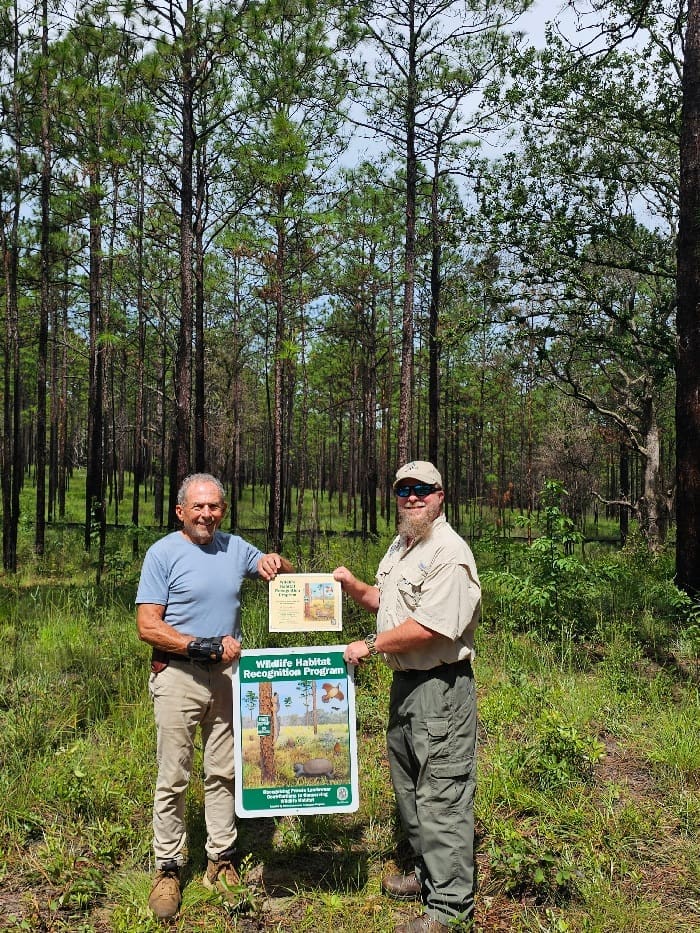
Private lands play a critical role in wildlife conservation by protecting and restoring rare habitats like the longleaf pine-wiregrass ecosystem and by managing farms, ranches and forests that provide habitat to many species. While public land protects many species of wildlife, these properties form a fragmented landscape of habitat. Private lands connect these islands of public conservation land and provide critical habitat linkages and corridors necessary for many species to thrive.
FWC’s Landowner Assistance Program offers a written management plan to guide landowners interested in working toward meeting the requirements for the Wildlife Habitat Recognition Program. Interested landowners of 20 acres or more can apply online. For more information, visit MyFWC.com/LAP and click on “Landowner Recognition Programs.”
FWC’s Landowner Assistance Program biologists provide technical assistance to private landowners, helping them develop management plans for their property that maximize benefits to wildlife and people. These biologists can also assist with finding financial assistance to complete important habitat restoration projects on private lands. To learn more about this program or to find help and resources for managing wildlife on your property, check out our “Wildlife and Habitat Assistance” section online at MyFWC.com/LAP or call your FWC Regional Office and ask to speak to a LAP biologist.





